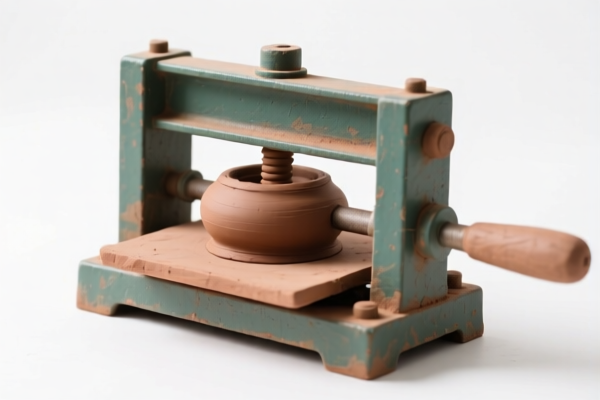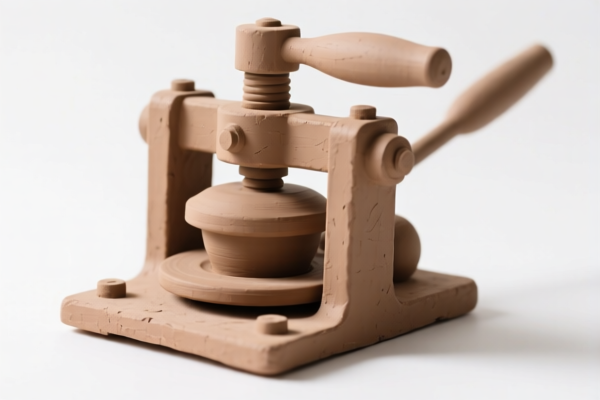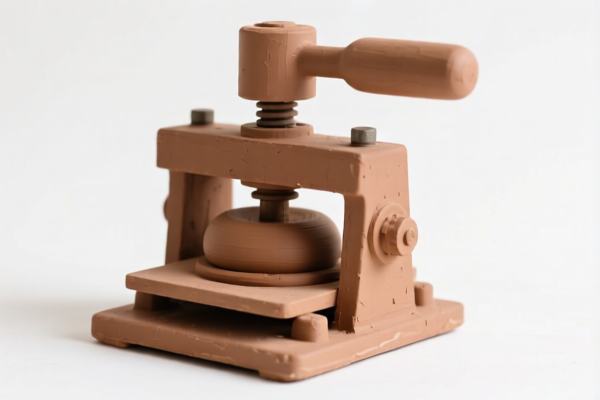| HS Code | Official Doc | Tariff Rate | Origin | Destination | Effective Date |
|---|---|---|---|---|---|
| 8474310000 | Doc | 55.0% | CN | US | 2025-05-12 |
| 8474390000 | Doc | 55.0% | CN | US | 2025-05-12 |
| 8430690100 | Doc | 55.0% | CN | US | 2025-05-12 |
| 8430498050 | Doc | 55.0% | CN | US | 2025-05-12 |
| 6809900000 | Doc | 55.0% | CN | US | 2025-05-12 |
| 6815910011 | Doc | 55.0% | CN | US | 2025-05-12 |
| 6815994110 | Doc | 55.0% | CN | US | 2025-05-12 |
| 3925900000 | Doc | 60.3% | CN | US | 2025-05-12 |
| 3925900000 | Doc | 60.3% | CN | US | 2025-05-12 |




Clay Machine
A clay machine, also known as a clay extruder or pug mill, is a device used to process clay to make it homogenous, remove air bubbles, and prepare it for forming. It is a fundamental piece of equipment in ceramics studios and industrial clay processing facilities.
Material
Clay machines are constructed from robust materials capable of withstanding the high pressures and abrasive nature of clay. Common materials include:
- Steel: The primary structural component, providing strength and durability.
- Cast Iron: Often used for the auger/screw and body due to its resistance to wear.
- Rubber: Used in the auger/screw to provide grip and reduce noise.
- Polyurethane: Increasingly used for auger components due to its durability and resistance to wear.
Purpose
The primary purposes of a clay machine are:
- Homogenization: Blending different types of clay, or reclaiming clay scraps, into a consistent mixture.
- De-airing: Removing air bubbles trapped within the clay body, which can cause cracking or explosions during firing.
- Wedging: Replicating the manual process of wedging, which aligns clay particles and improves workability.
- Plasticity Improvement: Increasing the plasticity of the clay, making it easier to form and reducing the likelihood of cracking.
Function
Clay machines operate by forcing clay through a confined space using a rotating auger (a screw-like mechanism).
- Clay is fed into the hopper.
- The auger rotates, pushing the clay forward.
- The clay is compressed under pressure as it moves through the machine.
- This compression forces air bubbles to the surface, where they are expelled.
- The processed clay is then extruded from the discharge opening.
- The speed of the auger and the design of the machine determine the level of compression and the resulting consistency of the clay.
Usage Scenarios
- Ceramics Studios: Used for preparing clay for wheel throwing, hand building, and sculpting.
- Industrial Clay Processing: Used in large-scale production of bricks, tiles, and other clay products.
- Reclaiming Clay: Processing clay scraps and waste into usable material.
- Mixing Clay Bodies: Combining different clay types to achieve specific properties.
- Preparing Clay for Extrusion: Ensuring clay is properly homogenized and de-aired for use in extruders.
Common Types
- Pug Mills: These are the most common type, featuring a horizontal auger within a sealed chamber. They are effective for both homogenization and de-airing. Variations include single-auger and double-auger models.
- Ram Extruders: These use a piston-like ram to force clay through a die, creating long coils or shapes. While primarily for shaping, they also contribute to de-airing.
- Screw Extruders: Similar to pug mills but typically used for continuous processing and shaping.
- Vacuum Pug Mills: Incorporate a vacuum system to further enhance de-airing capabilities, resulting in clay with significantly reduced air content.
- Manual Clay Wedging Machines: Smaller, hand-operated machines designed to replicate the wedging process. These are suitable for smaller studios.
The declared goods, “clay machine,” refer to machinery used for processing earth, specifically clay. Based on the provided reference material, the following HS codes are relevant:
- 8474310000: This HS code covers machinery for sorting, screening, separating, washing, crushing, grinding, mixing or kneading earth, stone, ores or other mineral substances in solid form; machinery for agglomerating, shaping or molding solid mineral fuels, ceramic paste, unhardened cements, plastering materials or other mineral products in powder or paste form; machines for forming foundry molds of sand; parts thereof: Mixing or kneading machines: Concrete or mortar mixers. Since clay is an earth substance and a clay machine likely involves mixing or kneading, this code is applicable. The tax details are: Basic tariff: 0.0%, Additional tariff: 25.0%, Additional tariff after 2025.4.2: 30.0%, Total tariff: 55.0%.
- 8474390000: This HS code also covers machinery for sorting, screening, separating, washing, crushing, grinding, mixing or kneading earth, stone, ores or other mineral substances in solid form; machinery for agglomerating, shaping or molding solid mineral fuels, ceramic paste, unhardened cements, plastering materials or other mineral products in powder or paste form; machines for forming foundry molds of sand; parts thereof: Mixing or kneading machines: Other. If the clay machine doesn’t specifically fall under the “Concrete or mortar mixers” category (8474310000), it would be classified here. The tax details are: Basic tariff: 0.0%, Additional tariff: 25.0%, Additional tariff after 2025.4.2: 30.0%, Total tariff: 55.0%.
- 6809900000: This HS code covers articles of plaster or of compositions based on plaster: Other articles. If the clay machine produces articles made of plaster or plaster compositions, this code may be relevant. The tax details are: Basic tariff: 0.0%, Additional tariff: 25.0%, Additional tariff after 2025.4.2: 30.0%, Total tariff: 55.0%.
Important Note: The applicable HS code depends on the specific function and output of the clay machine. If the machine is primarily used for mixing or kneading clay, either 8474310000 or 8474390000 would be appropriate. If the machine produces plaster articles, 6809900000 may also apply.
Customer Reviews
No reviews yet.